What is Remanufacturing?
Remanufacturing is the "comprehensive and rigorous industrial process by which a previously sold, worn, or non-functional product or component is returned to 'like-new' or 'better-than-new' condition and warranted in performance level and quality," according to the Remanufacturing Industries Council. But what does this mean? At SRC, we are proud of our remanufacturing process, quality standards and respectable reputation.
The Remanufacturing Process
Springfield ReManufacturing Corp helped develop the industry standard of the reman process that is used today. SRC has divided it into 7 steps. Check out the videos here.
1. Dissasembly: Each product is broken down completely into individual components. This step is arguably the most important in the reman process. Skilled workers are tasked with minimizing damage to the product, detecting all usable core to maximize value and must work efficiently as to not delay the next steps.
2. Cleaning: Our associates are clean freaks, and we're proud of that. Every disassembled component is cleaned thoroughly by various methods including thermal cleaning, wet and media blasting, hot agitation bath, automatic washers, ultrasonic tanks and more.
3. Inspection: 100% of every single part and component is inspected to the original equipment manufacturer's (OEM) specifications. At SRC, our associates use a wide variety of tools and inspection systems to ensure the finished product functions to like-new or better-than-new quality.
4. Replacement: Unfortunately, not every single part and component can be reused. Those parts are scrapped or recycled and replaced with new OEM approved parts.
5. Reclamation & Machining: Parts and components are machined to match OEM-specific tolerances. SRC associates use the following processes: horizontal and vertical centers, turning centers with live tooling, CNC honing, valve guide cutting and more.
6. Assembly: Finally, parts and components are ready to come together to match OEM specifications. At SRC, we create kits that can also be used for pre-packaged service parts and segregate assembly environments for turbochargers and fuel systems.
7. Testing: No engine, component or part leaves the shop floor without passing inspection and meeting our OEM's standards. Our facilities use state-of-the-art testing systems for engine production including the full dyno hot test. This entails running the engine for 25 minutes at key performance points and recording and archiving the results. Additionally, the five major engine components – cylinder heads, crankcases, connecting rods, crankshafts, camshafts – endure a series of testing. Fuel systems and turbochargers must also pass multiple levels of inspection.
Check out more details of SRC's testing processes and standards.



